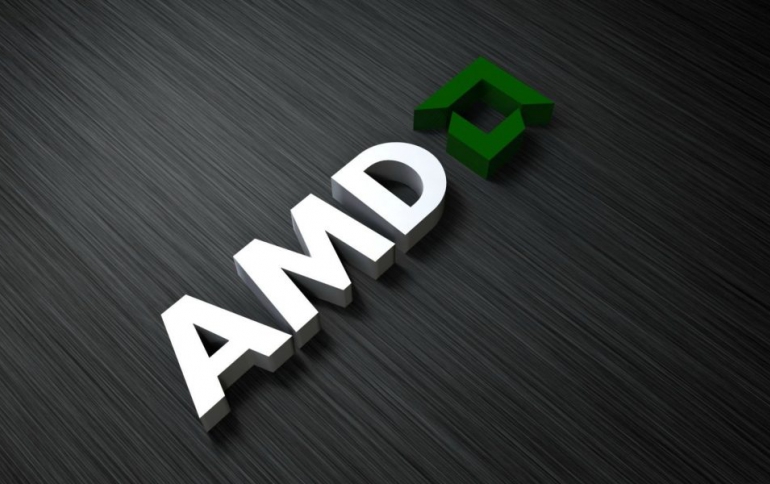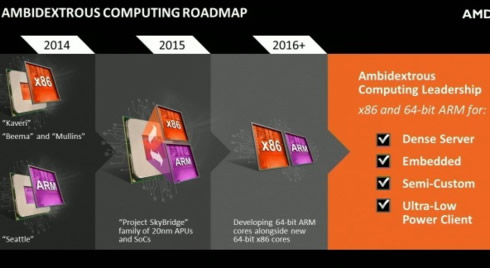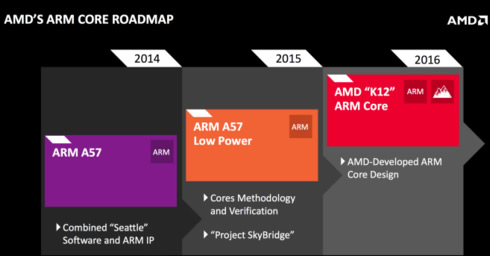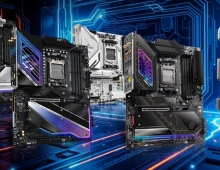
AMD Unveils Its 'Ambidextrous Computing' Plan
AMD on Monday unveiled 'Project Skybridge', a design framework with a family of pin-compatible ARM and x86 based SoCs, part of the company's 'ambidextrous computing' plan to deliver products ard a variety of marketplaces. Speaking at a press conference in San Francisco on Monday morning, AMD CEO Rory Read oulined the company's new strategy to unlock its own intellectual property for the "cloud era," starting by integrating graphics and design resources.
The chipmaker has expanded its licensing technology agreement with ARM Holdings as it seeks growth outside the slowing personal computer industry. It has acquired an architectural licence that allows the company to customise its chip architecture and differentiate its products from others based on ARM technology.
For 2015, AMD is aiming to bring in new markets that can benefit from ambidextrous computing. So here comes Project Skybridge, a design framework with a family of products headed toward a variety of marketplaces. With Project Skybridge, AMD is briding ARM and x86 systems.

"Before today, AMD was the only company in the world to deliver high performance and low-power x86 with leadership graphics. AMD now takes a bold step forward and has become the only company that can provide high-performance 64-bit ARM and x86 CPU cores paired with world-class graphics," said Rory Read, AMD president and CEO. "Our innovative ambidextrous design capability, combined with our portfolio of IP and expertise with high-performance SoCs, means that AMD is set to deliver ambidextrous solutions that enable our customers to change the world in more efficient and powerful ways."

So starting from next year, AMD will release a low-power 20nm Cortex A57 based SoC with integrated Graphics Core Next GPU. The 20nm ARM based SoC will be pin compatible with AMD's next-generation low power x86 SoC using Puma+ APUs. The ARM SoC will also be AMD's first official Android platform.
Although AMD will not likely release standard socketed desktop boards that are compatible with both ARM and x86 SoCs, a pin compatible design will be used for embedded, BGA solutions.
During the event, AMD executives also offered the first public demonstration of the AMD Opteron A-Series 64-bit ARM Server CPU Codename "Seattle" platform, which supports everything from social media to storage to big data applications. AMD demonstrated "Seattle" running a Linux environment derived from the Fedora Project. This Fedora Project-based Linux environment enables companies to transition to ARM-based servers without the need to integrate entirely new tools and software platforms to their IT environments.
The company also announced its ARM two-year roadmap. Besides the project Skybridg SoCs coming in 2015, AMD's first custom 64-bit ARMv8 CPU core, codenamed K12, is coming in 2016. The low-power K12 is an ARM core designed by AMD. The company did not provide many details, although it is expected to be made using 14/16nm FinFET.





















